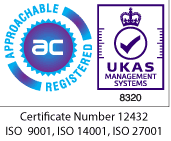How to Set Up Governance and Oversight for your TSA
Setting Up Your Governance
Assemble your TSA Team
TSAs involve the coordination of a complex series of workstreams, each of which contain many of their own interdependencies; thus a tight governance team and thorough delegation is key.
This team should usually include the following roles (although the nature of the M&A will dictate this):
Project Manager
Project Managers oversee the day-to-day workflow within M&A integration. They are often present throughout the entire process, beginning their job at the initial planning and due diligence phase, and operating through the integration into the post-transaction activities. As such, they are intrinsic to a successful M&A transaction.
Programme Manager
The Programme Manager is responsible for the successful delivery of a new capability and ensuring the delivery of the expected benefit. This requires the effective coordination of the projects and their interdependencies, as well as any risks or issues which may arise. In most cases, the Programme Manager will typically work full-time on the programme, as the role is crucial for creating and maintaining motivation and direction.
Throughout the programme, the Programme Manager provides the ongoing ‘health check’ of the programme by reassessing whether the projects continue to meet the programme’s objectives and continue to use available funds and resources efficiently. This requires the timely management of exceptions, slippage, and conflicting priorities.
Programme Director
Should the client have a larger business change containing multiple programmes then a Programme Director may be required to oversee and lead multiple Programme Managers. The Programme Director will be responsible for a number of related projects in order to achieve a beneficial change aligned with the strategic goals of the organisation.
The programmes will include projects likely to be highly complex in nature and will have involvement across a range of organisations/services/stakeholders at a regional, national and global level. The Programme Director will ensure that, through all relevant programme and project management staff, all projects will produce the required deliverables to within defined quality, time and cost constraints.
Solutions Architect
The role of Solutions Architect is highly recommended and involves producing the blueprints that map services and platforms into their new environment (see our previous article for further details on these). This is a key part of the process that must capture synergies and efficiencies, as well as flag up any risks or difficulties with data segregation and integration.
An effective Solutions Architect will identify potential overlaps or gaps in migrated/carved-out systems; then determining whether or not the overlapping item(s) should be retained. They can also flag potential incompatibilities between systems.
Vendor Management Team
Vendor managers monitor the relationships between the organisation and any vendors/partners attached. This includes recruiting the best available vendors, negotiating any contracts between them, and establishing standards for them.
Vendor Management is important because the relationship between an organisation and its third parties can determine their success. Thus, they need to be managed effectively in order to reduce risks such as supply chain disruption and instances of non-compliance.
Managing vendor relationships through a transition requires a thorough understanding of the vendor contracts, particularly around use restrictions and change of control clauses.
Commercial Contract Manager
The role of a Contract Manager is to review, negotiate, draft, and manage the various contracts involved through an M&A transaction; these may include the purchase agreement, confidentiality agreements, and any other legal document required for the deal.
Specifically, a Commercial Contract Manager focuses on contract agreements within a commercial or business-oriented context, such as those regarding an organisation’s revenue generation or cost control. Benefits include an assessment of contractual risks and obligations to ensure legal compliance; contractual accuracy to make sure terms and conditions are legally binding; management of post-transaction contractual obligations to provide a smooth integration; and resource allocation, which allows the in-house team to concentrate on core M&A activities.
Budget Control
Another important role within your governance team is that of the Budget Control Team. Their role is to track costs against the projection and act accordingly if they suddenly escalate to the point of threatening value creation.
There are four major cost areas to consider during a divestment:
- One Time Costs: these include costs for relocation of physical assets and people, setting up payroll, severance pay, and debt servicing.
- Transitional Services: these include consultant and legal fees, integration costs (including IT and HR), training, data migration, and outsourcing costs.
- Dis-synergies: there are usually decreased economies of scale when a business unit is carved out, and thus the buyer must act quickly to realise anticipated synergies to counterbalance these losses.
- Stranded Costs: the seller’s cost structure usually includes expenses that are linked to the operation of the divested business unit, however these cannot be easily isolated. For example, personnel that stay on the seller’s payroll while delivering services to the buyer.
Protect your Subject Matter Experts
There can also be a huge drain on Subject Matter Experts (SMEs) during the transition phase, and thus it is important not to underestimate the burden that it can place on them.
Critical staff left behind might be required to spend around 20%—but often up to 80%—of their time on transition services: some are prone to resist this, but in general most are also too busy with day-to-day work.
Thus, it is crucial to take some of the weight off of your SMEs. This is where a third party running your TSA can help. An outsourced team can take the raw data from SMEs and process it in order to save them some time that could be better spent elsewhere. They can also absorb some of the work and thus diffuse complaints down the line.
The transition phase relies on a degree of cooperation, and often goodwill, on the part of the SMEs to give up their time to help. Thus, if your Programme Manager lacks the necessary soft skills to mobilise this then there is likely to be trouble ahead.
Making Communication Part of your TSA
Migration and Communication
Both transferred staff and SMEs left behind raise communication challenges in terms of keeping systems and processes running efficiently during the fragmentation inherent in the transition period. Communication lines must exist between the relevant teams on both sides, and the groundwork should have been laid so that Programme Managers have the means to contact the right SMEs to answer their questions.
NDAs need to be signed off as soon as possible, and transferring staff and SMEs that are left behind must be in a position to share knowledge. Emails can be a particular problem due to their unofficial use as repositories of information, including passwords. Migration comes with an inherent fragmentation process that has many interdependencies; as such, transferring staff risk being cut off from many resources that they need for their job. For example, passwords are sometimes lost, and time is wasted trying to retrieve or reset them.
Controlling the Narrative
Given the costs and potential difficulties outlined thus far, we also recommend that buyers establish a central pillar of communication and negotiation throughout your TSA.
To mitigate risks to morale and loss of key talent, we recommend the use of a specially-designated communications team, who should aim to go live with a preconceived strategy as soon as the deal is announced. Their role is to launch the narrative to all stakeholders, highlighting the positive outcomes and underlying business case for the deal.
Their responsibilities are pivotal to a seamless transition, and might include:
- Celebrating milestones throughout the deal.
- Smoothing out any ‘Us vs Them’ mentalities that creep into the relationship between buyer and seller.
- Handling doubts and anxieties that exist within the workforce prior to and after announcements of transfer and/or redundancy.
- Carrying out face-to-face interviews with personnel who are transferring to discover their expectations.
- Creating a positive narrative for transfer and integration.
- Looking after new personnel from Day One (e.g., welcome parties, 1-on-1 check-ups, navigating integration into the new company culture).
- Having a fast response to any news that could damage reputations and harm the deal.
Key Takeaway
The key takeaway from this article is to set up strong governance early and create a consistent narrative of communication throughout your acquisition or divestiture. This allows for complete clarity on both sides, as well as a united front and culture of honesty during negotiations and when problems inevitably arise.
Failure to effectively communicate why you are acquiring or divesting to your stakeholders can cause multiple issues, including low morale and loss of talent, as well as devaluing the deal in the early stages and losing momentum post-close.
Celebrating milestones and wins as well as communicating honestly with your staff will help to heal the stress the drain on your teams. Migrating staff need to be given thorough attention and there should be collaboration between your HR resources and communication team to handle this fragile process.
To find out more about our M&A services, go to our M&A homepage.
If you have a specific question or would like to talk to one of our experts, please get in touch.
About Cambridge Management Consulting
Cambridge Management Consulting (Cambridge MC) is an international consulting firm that helps companies of all sizes have a better impact on the world. Founded in Cambridge, UK, initially to help the start-up community, Cambridge MC has grown to over 150 consultants working on projects in 20 countries.
Our capabilities focus on supporting the private and public sector with their people, process and digital technology challenges.
For more information visit
www.cambridgemc.com or get in touch below.
Contact - Africa
Subscribe to our Newsletter
Blog Subscribe
SHARE CONTENT











